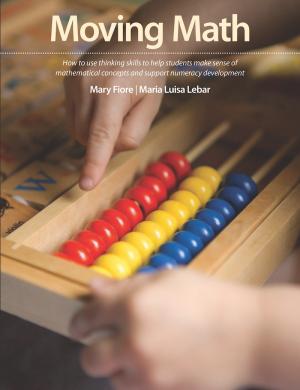
MOVING MATH: How to use thinking skills to help students make sense of mathematical concepts and support numeracy development
Moving Math is the newest book by the authors of the popular The Four Roles of the Numerate Learner. Beginning with an explanation of the distinction between mathematics (skills and concepts) and numeracy (connecting mathematics to the world), the authors encourage teachers to move beyond the “big ideas” of math towards the “bigger” ideas of numeracy.
The thinking skills addressed in this book are inferring and interpreting, analyzing, evaluating, making connections, synthesizing, reasoning and proving, and reflecting (if they sound familiar, they should: most are also processing skills from the Ontario curriculum). Each skill has its own chapter. Along with a clear explanation of the skill, there are sample learning experiences (as opposed to “tasks” – the authors’ distinction), student work, student responses and teacher feedback for the 1-3, 4-6 and 7-8 grade bands. There are useful thinking stems and prompting questions for each grade band and thinking skill.
One aspect of the book that I found particularly helpful is that it was written by practicing Ontario teachers with experience at all levels from the classroom through to the Ministry of Education. Ontario resources, such as curriculum guides, the “Guides to Effective Instruction” and selections from the “Capacity Building” series, are referenced throughout the book. The ideas presented fit the Ontario context.
Though this book would seem to be most useful for experienced teachers already very engaged in moving students towards deeper understanding of mathematical concepts, there is a great deal to offer new teachers just beginning the journey. One particularly useful tool is a comprehensive chart in chapter three that describes the components of effective learning experiences, such as accountable talk, inquiry-based learning and assessment for, as and of learning. The sample tasks are rich problems with multiple entry points. It will be a useful addition to any professional bookshelf.
Teri Thayer is a member of the Limestone Teacher Local.